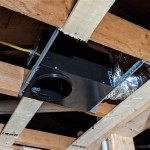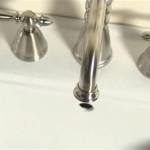Litter Box Under Bathroom Sink: Maximizing Space and Minimizing Odor
Integrating a litter box into unconventional spaces within a home can be a strategic way to manage pet-related needs while maintaining aesthetics and maximizing available square footage. Placing a litter box under a bathroom sink represents one such solution, offering both concealment and accessibility. This approach, however, requires careful planning and consideration to ensure hygiene, prevent damage, and maintain a comfortable environment for both the cat and the occupants of the home. This article explores the advantages and disadvantages of this arrangement, provides practical advice for successful implementation, and addresses potential challenges that may arise.
Advantages of Placing a Litter Box Under the Bathroom Sink
The primary benefit of placing a litter box under a bathroom sink is efficient space utilization. Bathrooms, often small rooms, can benefit significantly from concealing necessary but unattractive items. The space under the sink, frequently underutilized or used for storing cleaning supplies, can be repurposed to accommodate a litter box, freeing up valuable floor space. This is particularly advantageous in smaller apartments or homes with limited living areas.
Another advantage is odor control. Bathrooms are typically equipped with ventilation systems, such as exhaust fans, that can help mitigate the odor emanating from the litter box. Regular cleaning and the use of odor-absorbing litter further enhance this benefit. Furthermore, the enclosed nature of the under-sink space, especially when utilized with a cabinet door, can help contain both the odor and the scattered litter that often accompanies feline use.
Concealment is a further significant benefit. A litter box is not generally considered an aesthetically pleasing addition to a home’s décor. Placing it under the sink, particularly within a cabinet, effectively hides it from view. This is especially desirable for homeowners who prioritize a clean and uncluttered living environment. It also prevents guests from directly viewing the sometimes-unpleasant contents of the litter box.
Accessibility for the cat is also a pertinent consideration. While concealed, the litter box should still be easily accessible for the cat. The space under the sink usually provides a relatively quiet and secluded area, which many cats prefer. Additionally, locating the litter box in a consistent and predictable location helps the cat establish a routine and reduces the likelihood of accidents occurring outside the designated area.
Disadvantages and Potential Challenges
Despite the advantages, placing a litter box under the bathroom sink also presents several potential disadvantages and challenges. One of the most significant concerns is hygiene. Bathrooms are typically areas with high humidity and moisture levels, which can exacerbate the development of bacteria and mold in the litter box. Regular cleaning and the use of appropriate litter are crucial for mitigating this risk.
Damage to the sink and surrounding cabinetry poses another potential issue. Cats may scratch or claw at the surrounding surfaces, potentially damaging the finish or structure of the cabinets. Additionally, spilled litter and urine can seep into cracks and crevices, leading to unpleasant odors and further damage over time. Waterproofing the area and using protective barriers can help minimize this risk.
Accessibility for cleaning and maintenance can also be challenging. The confined space under the sink may make it difficult to reach all areas of the litter box for thorough cleaning. Regular scooping and complete litter changes may require careful maneuvering and potentially even removing the litter box entirely from the space. This can be time-consuming and inconvenient.
Compatibility with existing plumbing represents a further consideration. The presence of pipes and water lines under the sink may restrict the size and shape of the litter box that can be accommodated. It is essential to carefully measure the available space and ensure that the litter box does not interfere with the plumbing. Moving or modifying plumbing may be necessary, incurring additional costs and complexity.
The potential for increased odor, if not properly managed, can negate one of the supposed benefits of this arrangement. While exhaust fans can help, inadequate cleaning, the use of low-quality litter, or poor ventilation can lead to a buildup of unpleasant odors in the bathroom. This can be particularly problematic in smaller bathrooms with limited airflow.
Practical Considerations for Implementation
Successful implementation of a litter box under the bathroom sink requires careful planning and execution. The first step is to accurately measure the available space under the sink. This includes measuring the height, width, and depth of the area, taking into account any obstructions such as pipes or water lines. These measurements will determine the maximum size and shape of the litter box that can be accommodated.
Selecting an appropriate litter box is crucial. A low-profile litter box is often the best choice, as it minimizes vertical space requirements. Covered litter boxes can help contain odor and scattered litter, but they may be too bulky for some under-sink spaces. Self-cleaning litter boxes can reduce the frequency of manual cleaning, but they typically require an electrical outlet and may be more expensive.
Choosing the right type of litter is also important. Clumping litter makes it easier to scoop out solid waste, while odor-absorbing litter helps to minimize unpleasant smells. Consider using a litter mat or tray to catch any litter that is tracked out of the litter box. This will help to keep the bathroom floor clean and prevent the spread of litter throughout the home.
Implementing odor control measures is essential. Regularly scoop the litter box at least once a day, and completely change the litter at least once a week. Use a litter box deodorizer or baking soda to help absorb odors. Ensure that the bathroom is well-ventilated by using the exhaust fan regularly. Consider using an air purifier with a carbon filter to further reduce odors.
Protecting the surrounding cabinetry and surfaces is important to prevent damage. Line the bottom of the under-sink space with a waterproof mat or tray. Apply a sealant to any exposed wood surfaces to protect them from moisture. Place a scratching post or pad near the litter box to redirect the cat’s scratching behavior away from the cabinets.
Ensuring adequate accessibility for the cat is paramount. The opening to the under-sink space should be large enough for the cat to easily enter and exit. Consider installing a cat door in the cabinet door to provide added privacy and containment. Make sure that the litter box is placed in a location that is easily accessible for the cat, away from any obstructions or hazards.
Maintenance is key to a successful implementation. Regularly inspect the area under the sink for any signs of damage or leaks. Clean up any spills or messes immediately to prevent staining or odor buildup. Replace the litter box periodically to maintain hygiene and prevent the growth of bacteria. Monitor the cat's behavior and adjust the setup as needed to ensure its comfort and satisfaction.
Considering alternative placement options should be entertained if placing the litter box under the bathroom sink proves unsuitable. Other potential locations include laundry rooms, spare bedrooms, or even modified closets. Evaluating the specific needs of the cat and the available space within the home will help determine the most appropriate location for the litter box.
Consulting with a veterinarian or a professional cat behaviorist can provide valuable insights and guidance. They can offer advice on selecting the right litter box and litter, implementing effective odor control measures, and addressing any behavioral issues that may arise. Their expertise can help ensure a successful and harmonious integration of the litter box into the home environment.

Litter Boxes Hiding Cat Box

The Tiny Bathroom Litterbox Solution Themissy Com

The Tiny Bathroom Litterbox Solution Themissy Com
Quick And Easy Cat Litter Box Ers

Smart Ideas For Under Sink Storage In Bathrooms Bathroom Organisation

15 Design Friendly Places To Hide The Cat Litter Box

We Have Found The 10 Best Cat Litter Box Ideas For Your Home Hiding Furniture Door Diy

The Tiny Bathroom Litterbox Solution Themissy Com

We Still Want To See Your Litter Box Hauspanther

Our Now Lived In New Bathroom Hiding Cat Litter Box Boxes
Related Posts







